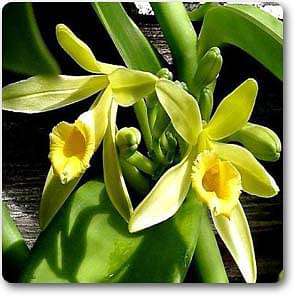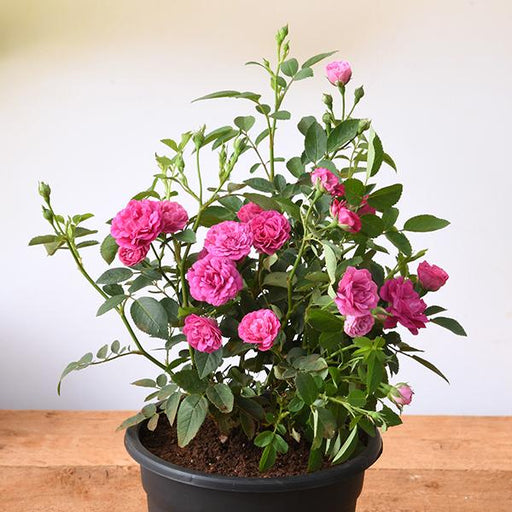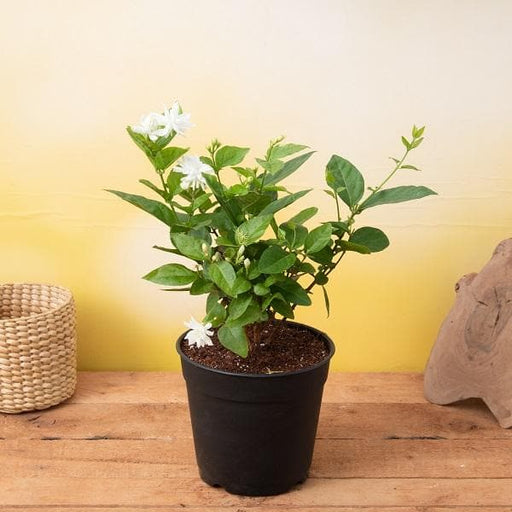
Carolina vanilla - Plant
(MRP Inclusive of all taxes)
- Shipping ₹79 for entire order
- Dispatch in 7 days
- Country of origin: India

(MRP Inclusive of all taxes)
 Save 29%
Save 29%
Air Purifier Money Plant with Pot The Air Purifier Money Plant, also known as Pothos or Epipremnum aureum, is a stunning indoor plant that...
View full details
 Save up to 15%
Save up to 15%
Peace Lily, Spathiphyllum - Plant The Peace Lily, scientifically known as Spathiphyllum, is a stunning houseplant celebrated for its elegant white...
View full details
 Save 25%
Save 25%
Jasminum sambac, Mogra, Arabian Jasmine - Plant Jasminum sambac, commonly known as Mogra or Arabian Jasmine, is a fragrant flowering plant...
View full details
 Save 18%
Save 18%
Combo Constituents Includes the Parijat Tree (Night-Flowering Jasmine), a culturally significant plant with fragrant flowers. Description The Pari...
View full details
 Save 25%
Save 25%
Miniature Rose, Button Rose (Any Color) - Plant The Miniature Rose, also known as the Button Rose, is a charming and compact flowering plant that ...
View full details Save 25%
Save 25%
Damascus Rose, Scented Rose (Any Color) - Plant The Damascus Rose, also known as Rosa damascena, is a timeless symbol of beauty and romanc...
View full details
 Save 17%
Save 17%
Beautiful Fragrant Mogra, Arabian Jasmine Plant with Pot The Beautiful Fragrant Mogra, also known as Arabian Jasmine (Jasminum sambac), is...
View full details Save 15%
Save 15%
Pack of Vermicompost and Neem Cake for House Plants Transform your indoor garden with our premium Pack of Vermicompost and Neem Cake, spec...
View full details
Pack of Plant Growth and Flower Boosters Unlock the full potential of your garden with our Pack of Plant Growth and Flower Boosters! This ...
View full details Save 38%
Save 38%
Combo of Jeevamrut and Neem Raksha for Easy Growth and Protection of Houseplants Transform your indoor garden with our exclusive combo of ...
View full details Save 22%
Save 22%
Plant Nutrients Kit (Pack of 16) for a Healthy Garden Transform your garden into a lush paradise with our Plant Nutrients Kit, featuring 1...
View full details Save 16%
Save 16%
Combo of Top Plant Fertilizers Elevate your gardening game with our exclusive Combo of Top Plant Fertilizers, featuring two bags of premiu...
View full details Save 24%
Save 24%
Pack of 4 Additives to Make Soil Healthy and Nutrient Rich Transform your garden into a thriving ecosystem with our Pack of 4 Additives de...
View full details Save 30%
Save 30%
Transform your gardening experience with our premium Combo of Perlite and Vermiculite. This unique blend is designed to enhance soil aeration and ...
View full details Save 27%
Save 27%
Combo of 2 Vermicompost and Cocopeat - Enrich Your Soil Naturally! Transform your garden into a thriving ecosystem with our Combo of 2 Ver...
View full details
 Save 35%
Save 35%
Best 6 Plants for Perfect Indoor Garden Transform your living space into a lush oasis with our curated collection of the Best 6 Plants for a...
View full details
 Save up to 50%
Save up to 50%
Mini Succulent Garden Pack Transform your space with our Mini Succulent Garden Pack, featuring a delightful collection of 4 any variety beautiful s...
View full details
 Save 30%
Save 30%
5 Best Fragrant Plants Transform your garden or indoor space into a fragrant paradise with our curated selection of the 5 Best Fragrant Plants. Th...
View full details
 Save 24%
Save 24%
Set of 2 Bonsai Looking Grafted Adeniums Transform your indoor or outdoor space with our exquisite Set of 2 Bonsai Looking Grafted Adenium...
View full details Save 45%
Save 45%
Top 4 Die Hard Succulents Pack Transform your indoor or outdoor space with our Top 4 Die Hard Succulents Pack, featuring a curated selecti...
View full details
 Save 30%
Save 30%
5 Best Indoor Plants Pack Transform your living space into a lush oasis with our '5 Best Indoor Plants Pack.' This carefully curated collection fe...
View full details
 Save 25%
Save 25%
Set of 4 Evergreen Air Purifier Plant Pack Transform your indoor space into a lush, green oasis with our Set of 4 Evergreen Air Purifier Pla...
View full details| SrNo | Item Name |
|---|---|
| 1 | Carolina vanilla - Plant |
The Carolina Vanilla plant, scientifically known as Vanilla planifolia, is a tropical vine renowned for its aromatic pods that produce one of the world's most beloved flavors. Native to Central America, this climbing orchid thrives in warm, humid environments, making it a perfect addition to your garden or indoor plant collection. With its lush green leaves and delicate flowers, the Carolina Vanilla not only enhances your space but also offers the potential for homegrown vanilla.
What makes the Carolina Vanilla special is its unique ability to produce high-quality vanilla beans, which are prized for their rich flavor and aroma. Unlike synthetic vanilla flavoring, the natural essence derived from these pods is sought after by chefs and bakers alike. Cultivating your own vanilla allows you to experience the satisfaction of growing this exquisite plant while contributing to sustainable gardening practices.
One of the standout features of the Carolina Vanilla plant is its beautiful, fragrant flowers that bloom for just one day, requiring careful pollination to produce fruit. This intricate process highlights the plant's unique biology and the importance of pollinators in the ecosystem. By growing Carolina Vanilla, you not only enjoy its culinary benefits but also support biodiversity.
Growing Carolina Vanilla contributes positively to the environment by promoting biodiversity and supporting pollinator populations. Sustainable vanilla farming practices can help protect ecosystems and provide livelihoods for local farmers, making it a responsible choice for eco-conscious gardeners.
If you think growing vanilla is as easy as pie, think again! Carolina vanilla cultivation is a delicate dance of patience and precision. This tropical beauty thrives in warm, humid climates, making it a diva in the plant world. With the right care, you can coax those fragrant pods to grow, but be prepared for a long wait—up to three years! So, grab your gardening gloves and channel your inner botanist, because this is one plant that demands your attention and love.
Caring for a vanilla orchid is like nurturing a high-maintenance friend. These plants require specific conditions to flourish, including bright, indirect sunlight and a well-draining potting mix. They love humidity, so misting them regularly is a must. If you want to keep your vanilla orchid happy, be prepared to pamper it with regular feeding and a supportive trellis for climbing. Remember, a happy orchid is a productive orchid!
Pollination of vanilla is the secret sauce behind those delicious pods. In the wild, vanilla orchids rely on specific pollinators, like certain bees and hummingbirds, to do the job. However, in cultivation, you might need to channel your inner bee and hand-pollinate these flowers. It’s a delicate process that requires a steady hand and a bit of finesse. But fear not! With a little practice, you’ll be a pollination pro, ensuring a bountiful harvest of those coveted vanilla beans.
Harvesting vanilla beans is like a treasure hunt, but instead of gold, you’re after those aromatic pods. Timing is everything; you want to pick them just as they start to turn yellow. Once harvested, the real fun begins with curing, which transforms those green beans into the fragrant vanilla we all know and love. It’s a labor of love that requires patience, but the reward is worth it. Just imagine the sweet aroma wafting through your kitchen!
Curing vanilla beans is the magical process that turns your green treasures into aromatic delights. It involves blanching, sweating, and drying—sounds like a spa day for beans, right? This meticulous process can take several months, but it’s essential for developing that rich, complex flavor. So, if you’re in it for the long haul, prepare to be patient. The end result will have you dreaming of vanilla lattes and homemade ice cream!
Growing vanilla in containers is the perfect solution for those with limited garden space or a penchant for indoor gardening. These climbing orchids can thrive in pots, provided you give them a sturdy support system to cling to. Choose a large container with good drainage, and don’t forget to keep the humidity levels up. With a little creativity, you can have a beautiful vanilla vine decorating your home while you wait for those sweet pods to appear.
Soil requirements for vanilla are as picky as a toddler at dinner time. These plants prefer a well-draining, organic mix that retains moisture without becoming soggy. A blend of peat, bark, and perlite works wonders. The pH should be slightly acidic, so keep an eye on those levels! If you want your vanilla plant to thrive, give it the right soil, and it will reward you with fragrant pods that will make your baking dreams come true.
The climate for vanilla growth is like a tropical vacation for your plant. These orchids thrive in warm, humid environments, ideally between 70°F and 90°F. If you live in a cooler climate, don’t despair! You can create a mini paradise indoors with the right humidity and temperature control. Just remember, vanilla is not a fan of frost, so keep it cozy and watch it flourish like it’s on a beach holiday.
Vanilla plant propagation is the art of creating new plants from existing ones, and it’s easier than you might think! You can propagate vanilla through cuttings or by planting seeds, but cuttings are the way to go for quicker results. Just make sure to choose healthy stems and provide the right conditions for rooting. With a little TLC, you’ll soon have a mini vanilla empire growing in your garden or home.
The benefits of growing vanilla are sweeter than a slice of cake! Not only do you get to enjoy the delightful aroma and flavor of fresh vanilla, but you also have a unique conversation starter for your gardening friends. Plus, growing your own vanilla means you can control the quality and avoid those pesky artificial flavors. And let’s be honest, nothing beats the satisfaction of using your homegrown vanilla in your favorite recipes!
The uses of vanilla beans are as diverse as a buffet table! From flavoring baked goods to enhancing savory dishes, these aromatic pods are a culinary superstar. You can infuse them into creams, sauces, and even cocktails for a touch of elegance. And let’s not forget about homemade vanilla extract—once you try it, you’ll never go back to store-bought! With so many uses, vanilla beans are a must-have in any kitchen.
Carolina vanilla is a delightful climbing vine, scientifically known as Vanilla planifolia. This tropical beauty is famous for its aromatic pods, which are the source of natural vanilla flavoring. With its lush green leaves and fragrant flowers, it’s like the diva of the garden, demanding attention and rewarding you with sweet scents.
Growing Carolina vanilla is like nurturing a diva; it requires the right conditions! Plant it in well-draining soil, provide a sturdy support for climbing, and ensure it gets plenty of indirect sunlight. Keep the humidity high, and don’t forget to shower it with love—your efforts will be rewarded with fragrant pods!
Carolina vanilla thrives in warm, humid environments, much like a tropical vacation! Aim for temperatures between 70°F and 90°F, with humidity levels around 50-70%. It loves bright, indirect sunlight, so think of it as a sunbather that prefers a little shade. Just don’t forget to water it regularly—no one likes a thirsty diva!
Patience is key with Carolina vanilla! Typically, it takes about 3 to 4 years for this plant to start producing those coveted vanilla pods. Think of it as waiting for a fine wine to mature—worth the wait! Once it starts, you’ll be rewarded with a fragrant harvest that’ll make your desserts sing.
Absolutely! Carolina vanilla can be a fabulous indoor plant, as long as you provide it with the right conditions. Ensure it has a bright spot with indirect sunlight, maintain humidity, and give it a trellis to climb. Just remember, it’s a bit of a high-maintenance houseguest, but the sweet rewards are worth it!
Like any diva, Carolina vanilla can attract a few unwanted guests! Watch out for aphids, mealybugs, and spider mites. Regularly inspect your plant and give it a gentle shower to keep pests at bay. If they crash the party, treat them with insecticidal soap or neem oil—no one likes uninvited guests!
Pollinating Carolina vanilla is like matchmaking for plants! In nature, specific bees do the job, but you can play Cupid too. Use a small stick or toothpick to transfer pollen from the male part to the female part of the flower. Timing is crucial—do this in the morning when the flowers are fresh and ready for romance!
Timing is everything when it comes to harvesting Carolina vanilla pods! Wait until they turn a dark green and start to show a bit of yellow at the tips. This usually happens about 8-9 months after flowering. Harvest them just before they fully ripen, and then let them cure for that rich, aromatic flavor!
Curing Carolina vanilla pods is like aging a fine cheese—essential for flavor! After harvesting, blanch the pods in hot water, then wrap them in a towel and place them in a warm, dark spot. After a few weeks, they’ll develop that rich, sweet aroma. Patience is key; good things come to those who wait!
Carolina vanilla is not a fan of the cold! If you live in a chilly climate, bring your plant indoors during winter. Keep it in a warm, humid environment, away from drafts. If it’s outside, consider covering it or bringing it inside before the frost arrives. This diva prefers to stay cozy and warm!
Yes, indeed! Carolina vanilla pods are not just for show; they’re edible and packed with flavor. Use them to infuse your favorite desserts, beverages, or even savory dishes. Just remember to treat them with respect—these pods are the stars of the culinary world, and they deserve a grand entrance in your kitchen!